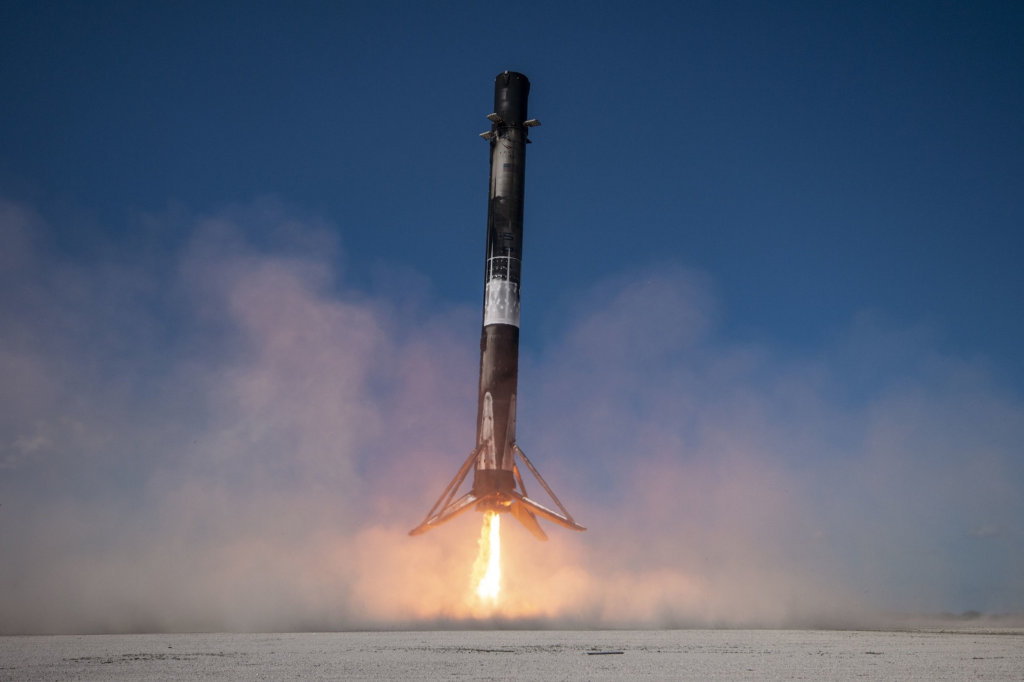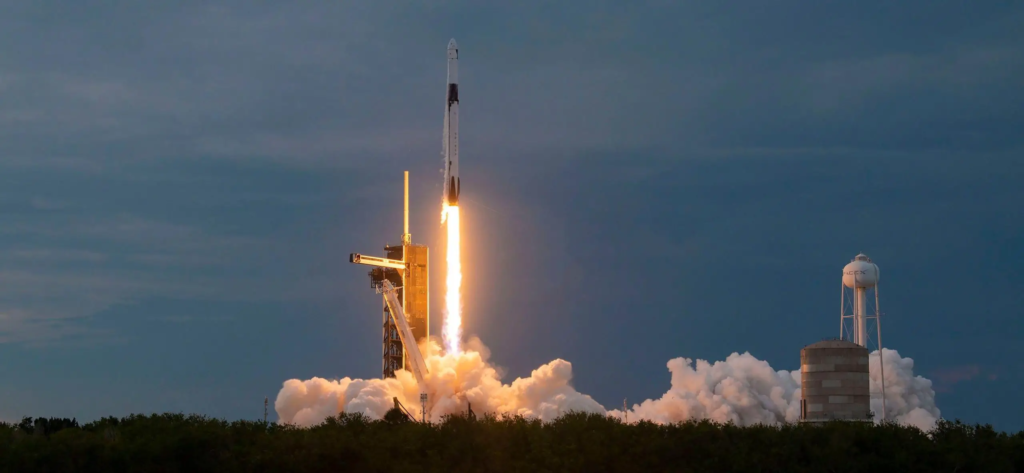
Why The Ax-2 Mission Is A Big Deal
Just over a year ago SpaceX and Axiom launched a Falcon 9 carrying the first fully private crew of astronauts to the International Space Station. Only days ago the second private crew lifted off and has already arrived at the ISS. These Ax2 astronauts are the latest class of space pioneers helping in Axiom’s main goal of expanding access to space and the ISS in particular.
With the first Axiom station segment launch approaching, this mission is another important first step before integration with the station in the future. This goal and progress come in addition to a very impressive flight profile and landing of the Falcon 9 booster which marked a first. Now, over the next week, the crew will make the most of this opportunity before getting back in Dragon and heading back to Earth.
Here I will go more in-depth into Axiom’s goal with this mission, an overview of exactly what’s happened so far, what to expect in the next few days, and more.
Mission Overview

Two days ago on Sunday, May 21st, SpaceX’s Falcon 9 rocket with a crewed Dragon Capsule on top lifted off. This was the start of a unique flight profile that saw a first for the Falcon 9 booster and a fast trajectory for Dragon. Specifically, Falcon 9’s first stage lifted Dragon to orbit before the first and second stages separated. From here the second stage accelerated Dragon to orbital velocity. While this was happening the first stage began its descent back to Earth. However, unlike every crewed Falcon 9 mission in the past, this booster was not heading for a Droneship down range but instead was going all the back to Launchpad 1 near the launch site. SpaceX even tweeted saying, “First Falcon 9 LZ-1 landing for a human spaceflight mission.”
This is a big deal for SpaceX and will play an important role in future crewed missions. This has to do with the fact that while drone ship landings are great options, the ability to land on the ground offers a lot more mission stability and conveniences. As far as what makes this possible now, it likely has to do with the success and confidence in this vehicle. Falcon 9s have been landing for a while now with about a ton of extra propellant left on board. If they’re getting more confident in their operations, they may be able to dip into that margin to bring them back to shore. This mission proved that it’s possible and will likely become the normal procedure whenever possible.
Not long after the first stage touched down, Dragon separated from Falcon 9’s second stage and performed an initial orbit activation and checkouts of propulsion, life support, and thermal control systems. From here, Dragon performed delta-velocity orbit raising maneuvers to catch up with the International Space Station. As the spacecraft approached, Dragon established a communication link with the International Space Station and performed its final orbit raising delta-velocity burn. Next, Dragon established relative navigation to the ISS and arrived along the docking axis, initiating an autonomous approach. Finally, we watched as Dragon performed the final approach and docked with the International Space Station, followed by pressurization, hatch open, and crew ingress.
While entering the space station, the Ax-2 crew was greeted by Expedition 69 crew members aboard the station. The astronauts held a welcome ceremony for the crew. Whitson, in her role as Ax-2 mission commander, pinned her fellow astronauts with the universal astronaut insignia, a pin from the Association of Space Explorers (ASE) and signifies their status as flown astronauts.
Now, the Ax-2 crew will live and work aboard the orbiting laboratory conducting more than 20 research experiments across a host of science and technology specialty areas to inform future human spaceflight and improve life on Earth. The entire mission duration is planned at 12 days meaning the crew will stay on the ISS for the next 9 days or so before getting back into Dragon for the trip home.
Axiom’s Plan

Axiom highlights that Ax-2 is expanding access for users to conduct robust scientific research, biomanufacturing, and technology demonstrations in low-Earth orbit. As the second private mission to the International National Space station, Ax-2 is an important step for Axiom Space and its academic and industrial partners to perform proof-of-concept studies and cutting-edge advancements in microgravity. It also is an important first step along the journey toward Axiom Station.
In 2020, as part of the broader Next Space Technologies for Exploration Partnerships (NextSTEP) cislunar initiative, NASA awarded Axiom a US$140 million contract to provide at least one habitable spacecraft to attach to the International Space Station. The modules constructed by Axiom Space are designed to attach to the Harmony forward port with the intent to demonstrate an ability to commercially provide services and products in the low Earth orbit economy. The “Axiom Segment” of the station is planned to include a node module to act as a connector, a research and manufacturing facility, a crew habitat, a large power module, and a “large-windowed” module for viewing the Earth.
While the first segment launch is set to happen in 2025, the company has made a lot of progress. So much so that initial segments are already nearing completion and will soon start going through testing. Following the completion of preliminary and critical design reviews in collaboration with NASA, Axiom’s partners at Thales Alenia Space began welding and machining activities for the primary structures of Axiom Station’s first module. The first pieces of fabricated flight hardware are beginning to come together, and the assembled module will join them in Houston soon where they will complete final assembly and integration.
Uniquely, Axiom Space is the only company with the privilege of connecting its modules to the International Space Station. This partnership and strategic connection allows Axiom Space to effectively adopt and service the multinational user base of the ISS National Laboratory to seamlessly continue research and manufacturing initiatives. Axiom Station will host people, research, and manufacturing that will lead development for numerous industries using techniques that are available only in microgravity. The station will also service the rapidly expanding infrastructure and solutions operating in space and provide an accessible platform for private companies and national governments to continue the research and development of breakthrough innovations.
This connects to the current Ax-2 mission as they share similar goals. Axiom is conducting astronaut training for commercial astronauts, and hosting governments and commercial partners. They are preparing for its private segments to be attached and for private astronaut missions to become a common occurrence on the ISS. In the grand scheme of things, Axiom Space plans to provide human spaceflight services to people, corporations, and space agencies. Missions to the International Space Station are offered by Axiom Space, with a 10-day mission including 15 weeks of training. In addition to training, Axiom Space states that the package will include mission planning, hardware development, life support, medical support, crew provisions, hardware and safety certifications, on-orbit operations, and mission management. Missions could extend for longer periods of time depending on the focus of the spaceflight.
Axiom Station intends to have its spacecraft modules individually launched and assembled in-orbit, first attaching to the International Space Station. Before ISS retirement (and atmospheric reentry), the company plans to detach its modules and commence orbit on its own as Axiom Station. Axiom Space renderings illustrate how modules might be berthed and relocated on the ISS by the Mobile Servicing System, specifically the Canadarm2. Canadarm2 might also continue its operations on the Axiom Space Station after the retirement of ISS in late 2020s. The company is currently targeting late 2025 for the launch of its first module to the ISS and the late-2020s for station completion.
As for the interior of Axiom Station, renderings of the habitat show a chamber with walls that are covered with tufted padding and studded with hundreds of color-changing LEDs. Axiom Space has publicly stated an intent to maintain at least one astronaut in the station continuously, who will be assigned to take care of research projects and station repairs. This includes amenities like high-speed Wi-Fi, video screens, picture windows, and a glass-walled cupola.
In relation to both Ax-2 and the future station, last month Axiom announced the Axiom Space Access Program, designed to enable countries to realize long-term economic and scientific value in microgravity today, without the need to build or expand their own infrastructure such as on-orbit facilities, launch vehicles, medical or training programs, and support capabilities.
Under this new program, Axiom Space will offer participating countries a range of services including the unique ability to live and work in microgravity, which will provide the opportunity to unlock the benefits of on-orbit research and development for nations around the world.
Conclusion
Axiom Space and SpaceX just launched the Falcon 9 rocket and docked to the ISS with a crew of 4. For the next 9 days, this crew will stay aboard the station conducting science before returning to Earth in the Dragon spacecraft. We will have to wait and see how it progresses and the impact it has on the space industry.
